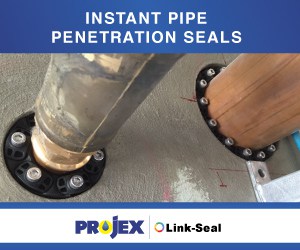Wave energy developer, Carnegie Wave Energy Limited has released the design of its commercial generation CETO 6 unit to be used following the current Perth Wave Energy Project as the company’s first production unit for sale.
The CETO 6 unit will have a 1MW (1000kW) power capacity, some four times of the current CETO 5 generation being used in the Perth Project. The increased capacity, combined with superior efficiency, delivers significantly reduced capital costs and, when deployed in large commercial size projects, is cost competitive in a range of markets globally. The CETO 6 design builds on the decade of experience gained in previous generations including the design and manufacturing of the current CETO 5 units.
The primary focus of the Company remains on the completion of construction, commissioning and operation of its Perth Project, however, given the lead times inherent in developing projects, it is important that the both CETO 6 unit and project designs and the associated financings are progressed in parallel with the Perth Project.
Carnegie’s Managing Director, Dr Michael Ottaviano, said:
“The CETO 6 unit will be a commercial breakthrough for the CETO technology and Carnegie and builds on approximately 10 years and $100 million of R&D. Beyond its planned demonstration in 2016, the 1MW CETO unit will allow Carnegie and its licensee partners to roll out profitable wave power projects globally.”
As well as a 1MW (1000kW) power capacity, the CETO 6 unit will also have superior efficiency, lower capital cost and reduced maintenance costs for sites where the array is located far from shore or in deeper water. The diameter of the buoyant actuator has the most significant influence on power output and cost reductions and has been increased from the 11m diameter of CETO 5 unit to approximately 20m.
Significant hydrodynamic modelling analysis of larger buoys has been undertaken over the past 2 years, including independent third party verification, confirming the relationship that underpins the increased capacity and efficiency with increasing buoy size. This analysis has been fed into the CETO 6 design process which commenced in 2013 and is currently in the preliminary design stage.
The detailed design stage will integrate performance results and learnings from the CETO 5 installation and operation to be integrated into the CETO 6 development. As with the in-ocean operation of previous CETO units, critical performance outputs from CETO 5 will be collected through the use of specialised in-ocean measurement and communications equipment. In total over 500 sensors will provide essential high frequency and real time data which is used to validate hydrodynamic, kinematic and hydraulic computational models prior to the finalisation of the CETO 6 design. During the project around 5 GB of data will flow into the dedicated servers every day containing a wealth of information including the first ever data of full scale wave energy device array interaction.
The final detailed CETO 6 design will also take into account the results of the hydrodynamic tank testing at the UK’s newest marine tank testing facility, the All-Waters Combined Current and Wave Test Facility in Edinburgh, planned for later this year.
CETO 6 will also incorporate the option for the power generation system to be moved offshore and subsea rather than solely onshore as with the current CETO 5 generation. This option allows CETO to take advantage of deeper, more distant to shore wave resources which significantly increases the size of the commercial market for CETO. Close to shore project opportunities would generate power (and water) onshore.
The CETO 6 demonstration project
The CETO 6 Project will consist of a 3MW grid connected 3 unit array demonstrated in 2016.
The electricity generated from the project will be sold under a Power Purchase Agreement. The capital cost of the Project is expected to be approximately $25m excluding design and associated overhead costs. The recently announced $20m debt facility with the Clean Energy Finance Corporation would be utilised to provide a significant proportion of the project’s capital requirements for a CETO 6 project in Australia. Carnegie is currently targeting a 2016 construction date for the project.
This project will provide a step change in CETO development by demonstrating the option of subsea generation and transmission of electrical power to shore via cables and further increasing the power capacity per CETO unit, which in turn decreases the cost of generation.
The location of the power generation within the buoy would remove the need to attach pumps, accumulators and other hydraulic components to the seabed, removing the requirement for offshore heavy lift vessel capability. This also reduces offshore installation and maintenance time and cost, as the entire CETO unit can be “hot swapped” and towed to shore for maintenance and repair.
The cost of the Project represents a three-fold improvement over the Perth Wave Energy Project on a dollar per MW basis ($/MW). Furthermore when deployed in commercial size projects the 1MW CETO 6 unit will be cost competitive with existing renewable energy technologies. CETO 6 will also produce a more consistent and predictable output than wind and solar energy. Final costings for the 3MW CETO 6 project will be determined and disclosed upon completion of the project design phase.













